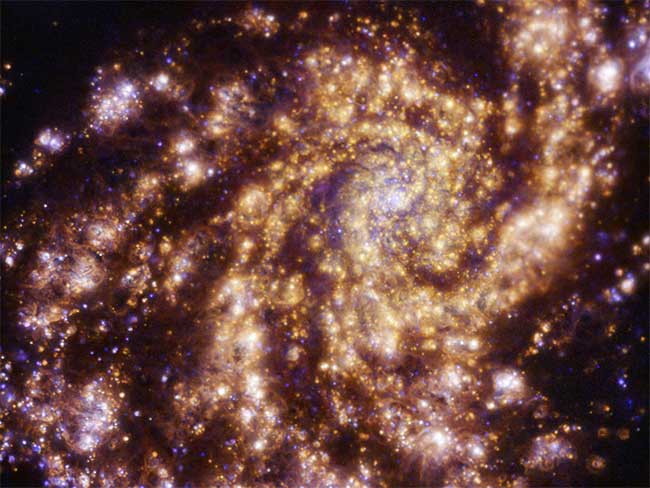The European Southern Observatory (ESO) recently unveiled a stunning image of a mirror world within the galaxy that contains Earth, the Milky Way.
According to Space, the galaxy in question is NGC 4254, also known as Messier 99, which was discovered in 1781 by the French astronomer Pierre Méchain. However, it wasn’t until modern astronomical tools evolved that the truth about this mysterious world next to the Leo constellation was revealed.

Latest image of Messier 99, a vibrant world in the midst of star formation – (Photo: ESO).
ESO’s latest images, through the PHANGS survey project, depict Messier 99 as a bright, radiant cluster in the sky. Notably, “this colossal spiral galaxy shares many characteristics with the Milky Way”, featuring long, large, and distinctly defined spiral arms, according to NASA.
In the most recent images from ESO, the “arms” of Messier 99 shine in hues of red and orange, representing cold gas clouds that are preparing to transform into stars.
Shimmering tones of purple and blue around the “arms” indicate stars scattered throughout the galaxy.
The images released by ESO are actually a combined dataset from two Very Large Telescope (VLT) and ALMA systems, both operated by ESO and located in the remote regions of Chile, where they have an unobstructed view of the star-filled sky.
According to scientists, Messier 99 is an intriguing subject of study because it may provide additional clues about how stars form in the universe. The VLT and ALMA continue to collect data about it.
Since Messier 99 is located 55 million light-years away, the images captured are not representations of the present but rather “time-traveling images” from 55 million years ago.
NASA is also studying this galaxy through the Hubble Space Telescope.




















































